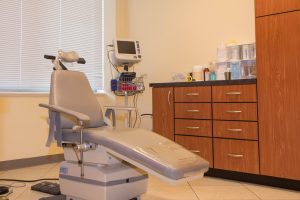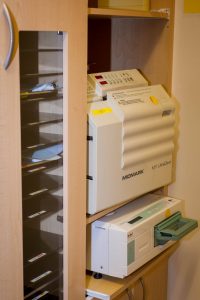“Oral and maxillofacial surgery is the specialty of dentistry which includes the surgical and adjunctive treatment of diseases, injuries, and defects involving both the functional and esthetic aspects of the hard and soft tissues of the oral and maxillofacial region.” — American Association of Oral and Maxillofacial Surgery
Oral and maxillofacial surgery is a surgical specialty which encompasses diagnostic and surgical services to treat diseases, injuries, deformities, and cosmetic defects of the oral and facial region. The maxillofacial region includes the upper jaw, cheekbones, the bones that support and surround the eyes, chin, lower jaw, jaw joints, associated facial structures, and the intra-oral structures, including teeth and their supporting bone and gum tissues, salivary glands, and lining tissues of the mouth.

Oral and maxillofacial surgery training begins after completing dental school and includes a hospital-based internship as a prerequisite. Completion of an OMS residency requires four to six years of hospital-based training focusing solely on the maxillofacial region. It includes extensive training on traditional intraoral surgery in addition to maxillofacial (facial skeleton and soft tissues) surgical training. It also includes medical training and rotations such as anesthesia, emergency room, critical care medicine, internal medicine, general surgery, plastic surgery, and neurosurgery. Oral surgeons also receive extensive training in the administration of outpatient anesthesia and, as part of their residency training, are required to administer hundreds of anesthetics including local anesthesia, general anesthesia, and IV sedation. Some oral surgeons also pursue a medical degree as part of their training.
 At Loudoun Oral and Maxillofacial Surgery, most oral and maxillofacial procedures are performed in an office ambulatory surgical setting. These procedures include the removal of teeth, management of oral and facial pathology, placement of dental implants, and bone and soft tissue grafting. General anesthesia and sedation can be used to manage anxiety or discomfort. Our offices are equipped with state-of-the-art technology and instruments, and we maintain strict adherence to infection control and sterilization measures.
At Loudoun Oral and Maxillofacial Surgery, most oral and maxillofacial procedures are performed in an office ambulatory surgical setting. These procedures include the removal of teeth, management of oral and facial pathology, placement of dental implants, and bone and soft tissue grafting. General anesthesia and sedation can be used to manage anxiety or discomfort. Our offices are equipped with state-of-the-art technology and instruments, and we maintain strict adherence to infection control and sterilization measures.
Other surgical procedures are done in the hospital. These procedures include corrective jaw surgery to treat jaw growth problems (which can affect both the function and appearance of the oral and facial area), treatment of complicated facial fractures and injuries, reconstruction of the jaw or facial regions resulting from pathology or trauma, and management of jaw tumors.
Our doctors have extensive hospital-based training in the delivery of outpatient and inpatient general anesthesia and IV sedation. Our highly-qualified and certified staff is trained in assisting with surgery and anesthesia under the guidelines of the AAOMS within our state-of-the-art office. You will be continuously monitored both during and after surgery for your safety and health.







